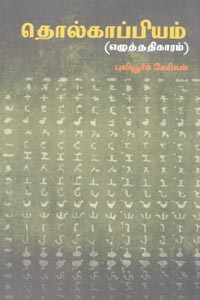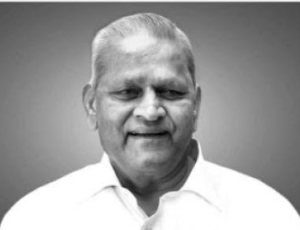A TREATEMENT OF VINAIYECCAM IN TAMIL GRAMMATICAL WORKS

தொல்காப்பியம்
-Dr. HEPSY ROSE MARY. A
Tolkappiyam the earliest extant grammatical work in Tamil deals with the vinaiyeccam or verbal participle in vinaiyiyal section of collatikaram. Further it speaks about the Vinaiyeccam of various ending in eluttatikaram and discusses the miscellaneous aspects of vinaiyeccam in ‘ Eccaviyal’. Viracoliyam of 11th century A.D treats the vinaiyeccam in tatuppatalam’ in two karaikas. Neminatam of 12th century and Nannul of 13th centuru A.D deal with it in vinaiyiyal. Prayokavivekam of 17th century A.D. treats it in tinnuppatalam in two karikas . Ilakkana Vilakkam and Ilakkana Kottu of 17th century A.D deals with it in collatikkaram. Muttuviriyam and Saminatam 19th century A. D treats it in vinaiyiyal and vinaimarapu. An evaluation of the description of vinaiyeccam by these different grammatical works in attempted here.
Definition:-
The term vinaiyeccam refers to a set of verbal forms that includes the infinitive, the adverbial participle, the conditional and other. What all members of the category of vinaiyeccam share in common is that they lack oppositions of tense, person, number and gender; that they are subordinate verb forms incapable of constituting a complete predication by themselves; and that they must combine with other verb forms to make up a coherent sentence.1 This is how Stanford B. Steever defines Vinaiyeccam.
- “On the Semantic properties of Vinaiyeccam” – Selected papers on Tamil and Dravidian Libguistics- Sanfor B -0 Steever. P:64, 1981.
Classification of vinaiyeccam:-
Tamil Grammatical works do not define the vinaiyeccam explicitly but they classify it in to so many types or patterns in the form of a formula. Tolkappiyam lists nine primary patterns of vinaiyeccam. They are as follows:\
- Ceytu, 2. Ceyyuu, 3. Ceypu, 4. Ceytena, 5. Ceyyiyar, 6. Ceyyiya, 7. Ceyin, 8. Ceya, 9. Ceyarku.
These nine patterns and the six terminations of adverbial participles listed and two other types ( ati, ceyya) of the same, referred to in Toilkappiyam may be classified into sub-groups according to their different usages.2
Viracoliyam speaks about the two formulas ‘tumanta’ and tuvanta’ pratyams following Sanskrit model. Tumanta pratyam includes participles with the following terminations poruttu, ka, paan, tarku, vaan, aa. Tumanta pratyam includes participles with the terminations such as aa, ittu, tu, u, i. Tonnull vilakkam talks about fourteen termination such as i, u, ena, u, pu, a , il, in, iya, iyar, van, paan, paakku.
Tolkappiyam and Muttuviriyam talks about fifteen patterns of vinaiyeccam. Neminatam and Nannul talk about twelve formulas. Ilakkana vilakkam lists eighteen formulas and Saminatam has thirteen formulas. Ilakkana kottu does not talk about this. Neminatam, Ilakkanavilakkam, Tonnul vilakkam and Saminatam added the vinaiyeccam with the suffixes paan, paakku etc to the list which are not found in Tolkappiyars pattern. The vinaiyeccam vaan mentioned by Nannul Ilakkanavilakkam, Muthuviriyam, Tonnul vilakkam and saminatam is not at all found in Tolkappiyam and Neminattam but Viracoliyam mentions vaan and paan. These participles are latter developments in the language.
- “Non – finite verbs” – The trteatment of Morphology in Tolkappiyam : Dr. M. Israel. P: 210 – 1973
Table of Vinaiyeccam patterns enumerated by the Tamil Grammatical works
Tolkappiyam does not mention the pattern ‘Ceyyaa’ in the nine primary patterns in vinaiyiyal. But in Eluttatikaram, this is mentioned in 223 sutra.
“Ceyya ennum vinaiyencu kilaviyum
Avviyal tiriya tenmanar pulavar ” ( Tol.223)
Cenavaraiyar opines that ‘ceyya’ is the later varient from of ceyyuu. But Nannul, prayokavivekam,IIakkana Vilakkanam and Saminatam considers these two as separate.
(ex.) unna vantan, unnu vantan
Prayokavivekam introduces ‘tuva’ and ‘tumun’ as two types of vinaiyeccam patterns. The author- commentator includes nine patterns in the commentary in addition to whose referred to above. They are,
tuva – ceytu
tumun – ceya
Kamun – ceyya
namul – ceyyu
yap – ceypu
iti – ceytena
aticet – Ceyin, ceytal
nuvil – Ceyyiya
He employs the Sanskrit technical terms to the designate each of vinaiyeccam types. But Viracoliyam which is considered to be a Sanskrit based work. Like Prayokavivekam doesn’t talk about these patterns. It seems that Prayokavivekam follows Tolkappiyam in the classification but adopts Sanskrit technical terms to designate them.
Morphological analysis :-
Dr. Caldwell classifies the verbal participles in to,
- Verbal participle patterns – Ceytu,Ceyyu ,Ceypu, Ceyya
- Purpose participle patterns – Ceyyiya,Ceyyiyar,Ceyarku
- Conditional participle patterns – Ceyin
- Infinitive participle patterns – Ceya
- Adverbial participles – Pin , mum , kaal , katai, vali, itattu3
Ceytu pattern:-
This pattern of the form may be segmented as Cey-t-u. ‘ Cey’ verbal stem. ‘t’ – past tense marker and ‘u’ may be identified as verbal participle marker. Viracoliyam and Prayokavivekam employs the word ‘tuva’ instead ‘ Ceytu’. The tense of this participle pattern possess a difficult problem. Tolkappiyanar says that the pattern ‘Ceytu’ which denotes past tense may also occur in the future tense. Nannul, Ilakkana Vilakkam and Saminatam say that the pattern denotes only past tense. But prayokavivekam says that it denotes three tenses. Ilakkana Kottu and Muttuviriyam are of the opinion that there is no tense signification in the vinaiyeccam.
(ex.) untu – vantaan
Untu – Varukiraan
Untu – Varuvaan
Ceypu Pattern:-
This pattern of form may be segmented into cey, -pu. ‘Cey’ verbal stem ‘pu’ participle termination. Nannuul , Ilakkanavilakkam and Saminatam mention that the pattern ‘ Ceypu’ denotes only past tense. But Prayokavivekam says that it denotes three tenses. Naccinarkiniyar points out that it denotes an action done previous to that of the following verb and rarely the future tense.
Ceyyuu and Ceyyaa patterns:-
Tolkappiyanar includes ‘ ceyyuu’ in the list of adverbial participle patterns but only refers to the pattern ‘ ceyyaa’ in Ezhutatikaram, while dealing with the external Sandhi changes of words with final ‘a’. These patterns ceyyuu and ceyyaa may be segmented as ‘ cey-uu and cey- aa, ‘ cey’ verbal stem uu and aa participle markers. According to Cenavarayar, the forms of the pattern ‘ceyyu’ denote the past tense. Teyvacilaiyar mentions that they denote either past or present. According to Naccinarkiniyar and Nannular they denote past tense. Ilakkanakottu and Saminatam also say that it denote past tense. As there is no tense marker in the above two patterns of forms they may be taken to denote different tenses.
Ceytena pattern:-
This pattern consists of the verbal participle pattern ‘ ceytu’ and the infinitive participle pattern ‘ena’. The form ‘ena’ may be analysed into ‘en-a’, en – verbal stem a infinitive participle marker. Nannul and Ilakkanavilakkam say that it denotes past tense.
(ex) Unnena
Ceyyiya and Ceyyiyar patterns:-
These patterns consist of the verbal stem cey and the suffixes ‘iya’ and ‘iyar’ Ilampuranar is silent regarding the tense of these patterns of these forms. All the other commentators and authors are agreed in attributing the future tense signification to them. There is no overt marker to denote the tense in them.
Ceyarku pattern:-
This pattern is used to denote a purposive significate. This consists of the verbal noun ceyal and dative marker ‘ku’. According to Cenavaraiyar and Teyvaccilaiyar the forms of this pattern but it does not talk about its tense signification. Viracoliyam , Nannul, Prtayokavivekam, Ilakkana kottu and Saminitam do not include this in the list of adverbial participle patterns.
Ceyin pattern:-
This participle pattern consists of the verbal stem and the suffix ‘n’. According to Cenavaraiyar, the form of this pattern denotes three tenses but according to Teyvaccilaiyar, Naccinarkiniyar, Nannular and Vaitianatatecihar denote only the future tense.
Ceya Pattern:-
The Dravidian Linguistics Dr. Caldwell, L.V. Ramaswamy Aiyar and others also consider ‘ ceya’ as the pattern of infinitive participles4. The form ceya consists of verbal stem ‘ cey’ and the suffix’a’. The ‘ceya’ is called as ‘tuman’ in Viracoliyam and ‘ tumun ‘ in Prayokavivekam. It is evident that tense is not marked in this form and it say that the pattern ‘ceya’ denote only present tense, but the commentator of Nannul and prayokavivekam say that it denotes three tenses.
(ex) ter tara vantan, ter tara vrukiran, ter tara varuvan
Neminathan and Ilakkanavilakkam do not elaborate this aspect.
Adverbials:-
Tolkappiyam and Ilakkana vilakkam list six forms as terminations of adverbial participles and Neminatam lists two forms ( pin, mun). Viracoliyam, Nannul Prayokavivekam and Saminatam do not talk about this.
Muttuviriyam list four or ( Pin, mun, kal, and katai) . The commentators cite following examples as adverbial participles.
(ex) vanta – pin, varu- mun, vanta-k-kaal, vanta-ka-katai, vanta-vazhi, vanta- idattu
The above are the patterns of some of the adverbial expressions. On investigation it is found that the forms are not terminal suffixes but are real free forms. They are nous denoting place or time. This will be alternative analysis to this type of Vinaiyeccam. Hence it will a case of relative participle + noun. It seems that Nannul and Ilakkanal vilakkam are of this view.
For example,
Neer poy kuriyapin mey kuruvaar yaar
Cenavaraiyar comments that ‘kuriyapin’ is taken as one word meaning kurinal ‘if you utter’ and that is labeled vinaiyeccam. Whilst others taken as two words kuriya and pin where kuriya is labeled as peyareccam. The commentary of Cenavariyar gives these views and one should examine it in detail.
Syntax and Semantics of vinaiyeccam:-
Nannular elaborately explains that vinaiyeccam shows the tense. He also explains ceytu, ceyya, ceypu, ceyyu and ceytena show past tense. Ceya shows present tense and ceyin, ceyyiya, ceyyiyar, vaan, paan and pakku show future tense. Tense signification of vinaiyeccam is elaborately explained in Morphological analysis shown above. The six patterns in ‘tumanta’ pratyam ( ceya) explained in viracoliyam denote the meaning of dative case or fourth case
(ex) Unnutar poruttu – poruttu
Karkat tarpariyattaan – ka
Unpaan vantaan – tarku
Arivan Karuttuntu – vaan
Unna vallan- a
All the tuvanta pratyam in viracoliyam expect a shows the past tense.
(eg) Untittup ponan – ittu
Pukuntup ponan – u
Pukkup ponaan – u
Colli ninraan – i
Prayokavivekam states that ‘ tuman’ as called ceya and ceyin can be changed. Neminatam and Nannul explain that one vinaiyeccam becomes another vinaiyeccam in deep structure ( ceya – ceytu) . Eventhough they are formally different, the meaning is same.
(ex) nayiru pattu vantaan – nayiru pata vantaan
Kolikuvip polutu pularnthatu – kolikuvap polutup pularntatu
‘ pattu’ and ‘kuvi’ are the verbal participle of the ceytu pattern. Tamil scholars interpret this verbal participle as verbal infinitive ‘ceya’. In both cases according to them ceya form has become ceytu form. Cenavaraiyar and Naccinarkkiniyar also explain these usages under the two sutras. ( Tc.Vi 34,35). Prayokavivekam mentions seven characteristic features of verbal participle of the pattern ceytu, ceyya, ceyu and ceypu (Pv,39) . There are,
- Manner adverbial clauses
- Negative verbal participle clauses
- Reduplication of participles
- Interpretation of three tenses
- Inversion
- Samaana Karta as against pinna karta
- Verbal participles in the form of finite verb
1. Manner adverbial clauses:-
The verbal participles clause occurs also as manner adverbial clause. It occurs as the first part of the compound root. But in some cases the first member of this compound root is in the pattern of ceytu, the verbal participle. Ordinarily when a verbal participle and another verb come together, it means that the action of the verbal participle occurs first and then the action of the verb,
(ex) Kan mutic cirittan
Here the closing of the eyes and laughter occur togethers.
2. Negative verbal participle clauses:-
The verbal participle and predicate which complete it my negute each if there is a verbal participle and the predicate (a). The first may be negative and the second positive.
(ex) unnatu vantan .
The first may be positive and the second negative.
(ex) untu varan
Tolkappiyam does not illustrate the Negative verbal participle pattern. But the commentator of Tolkappiyam and Tonnul Vilakkam cited the following negative verbal participle (with the following suffixes aamal, aatu aamai, aa
(ex): ceyaamal – aamal
Ceyaatu – aatu
Ceyaamai – aamai
Ceyyaa – aa
3. Reduplication of Verbal Participles
The verbal participle occurring as predicate of verbal participle clause with verbal complement, casual adverbial, an manner adverbial function can be reduplicated. Verbal participles consisting of the same words are repeated.
(ex) Vantu vantu
Verbal participles consisting of different word may be piled up.
(ex) Kantu kettu untu uyirttu urrariyum
Tolkappiyam, Viracoliyam and Nannul explain this pattern.
4. Interpretation of three tenses:-
The verbal participles of the ‘ceyty’ pattern comes with of three tenses.
(ex) untu vantaan – past
Untu varukiran – present
Untu varuvaan – future
Thus it is concluded that untu can occurs in three tenses.
5. Inversion;-
-
- The verbal participles sometimes inverted.
- (ex) Kolunnar tolutezhuvaal
According to the author ‘ tolutezhuval’ as an inversion of Elunthu tozhuval. Ezhutal is to wake up’. ‘tolutal’ is to worship’ because he feels one cannot offer physical worship before waking up from sleep. Only the Prayokavivekam explains this point.
6. Samana Karta as against pinna kartaa:-
Verbal participles of the pattern ceyyuu and ceypu take samana karta the predicate of their own subject.
(ex) Untu vantaan caattan
7. Verbal Participles in the form of finite verb;-
The verbal participle ‘ceytu’ changes its form to that of finite verb, but that finite verb has to be interpreted as a verbal participle.
Moyinal uyirtta kalai – Montu uyitta kaalai’ moyinal which is the finite form has to be interpreted as the verbal participle ‘montu’.
Tolkappiyam , Neminatam, Nannul, Prayokavivekam, Ilakkana Vilakkam, Muttuviriyam and saminatam state that verbs may occurs as the verb of the whole. Sometime as a verb of the whole becomes verb of the part. But Viracoliyam Ilakkana kottu and tonnul Vilakkam do not talk about it.
(ex) Untu vantaan, Unnu vantan, Unkupu vantaan – verb of the whole
Kai irru viluntan, kai irru viluntaan, Kai irupu viluntaan – verb of the whole becomes verb of the part.
Conclusion:-
While going through the treatment of vinaiyeccam in Tamil Grammatical works we can see that generally Neminatam, Nannul, Ilakkana vilakkam, Muttuviriyam and Saminatam follow Tolkappiyam. But the Nannul and Saminatam do not talk about adverbial markers like kaal, katai, vali and itattu. For them it is a case of relative participle + Noun. Neminatam and Muttuviriyam accept the view of Tolkappiyam and Neminatam include mun and pin only and Muttuviriyam include pin, mun, kaal and katai. Tonnulvilakkam illustrates Negative verbal participle marker. Eventhough Viracoliyam and prayokavivekam follow the Sanskrit models, Prayokavivekam in most cases follows Tolkappiyam. Viracoliyam classifies vinaiyeccam into two types that is tuva and tuman. Viracoliyam Neminatam and Muttuviriyam do not talk about the tense signification of vinaiyeccam. The others differ in their interpretation of tenses. The syntactic aspects of vinaiyeccam are also elaborated in these works except vinaiyeccam, where there is only a brief remark is fond. Prayokavivekam is unique that it gives a nine way classification with Sanskrit terms. It also summaries the syntactic aspects of vinaiyeccam under seven heads.
Bibliography
- Gunavirapandithar – Neminatham, S.I.S.S.W Publishing society, Tirunelveli ltd, 1956.
- M, Treatment of Morphology in Tolkappiyam , DLA, Trivandrum, 1973.
- Meenakshi Sundaram. T.P – Foreign Models in Tamil Grammar – D.L.A, 1974.
- Muthuvira Appaiya Thedshidhar – Muthuviriyam , Appar Achakam, Chennai , 1972.
- Pavananthimunivar- Nannul, Triplicane, 1951.
- Subramania Thedshithar – Prayokavivekam, Madras the S.I.S.S.W Publishing society, Tirunelveli ltd, 1973.
- Thomas Lehman – A Grammar of Modern Tamil, PILC , Publication, 1993.
- Vaithiyanada Desikar – Ilakkanavilakkam, Thiruvarangam Achakam, Madras, 1973.
*****
The writer is an Assistant Professor
Department of Tamil, University of Kerala.










Excellent work mam